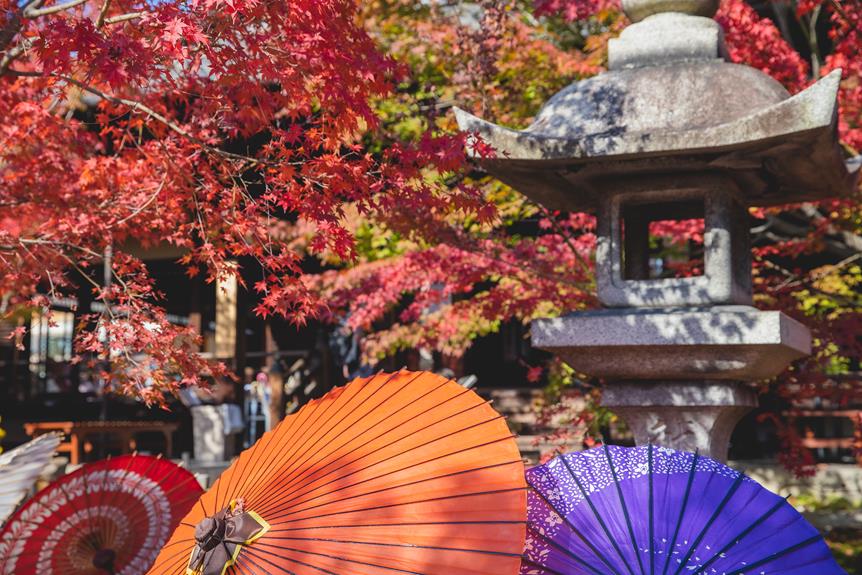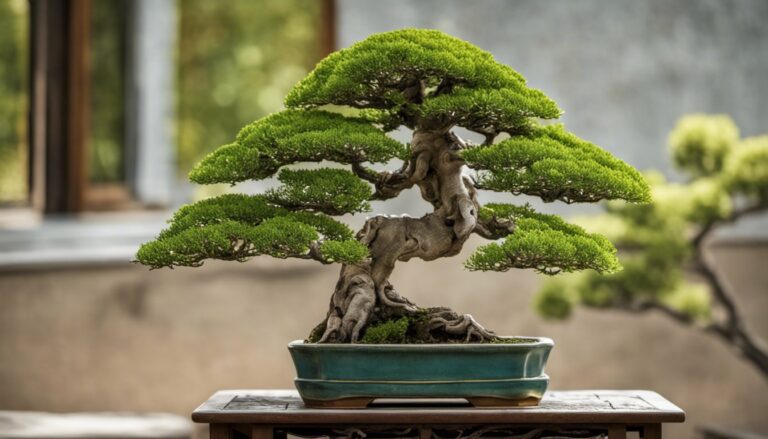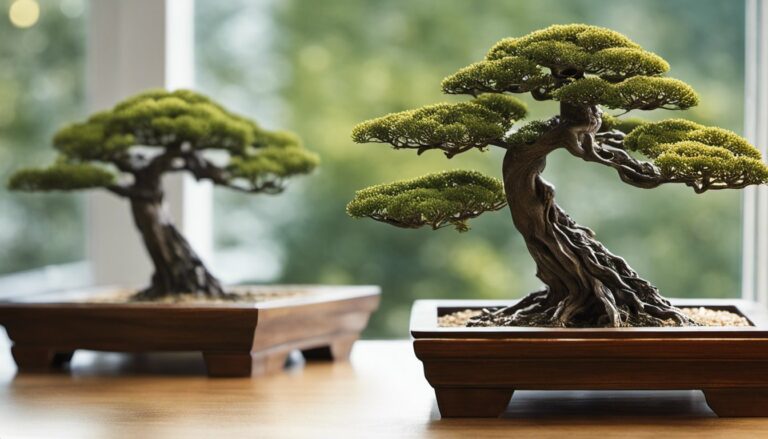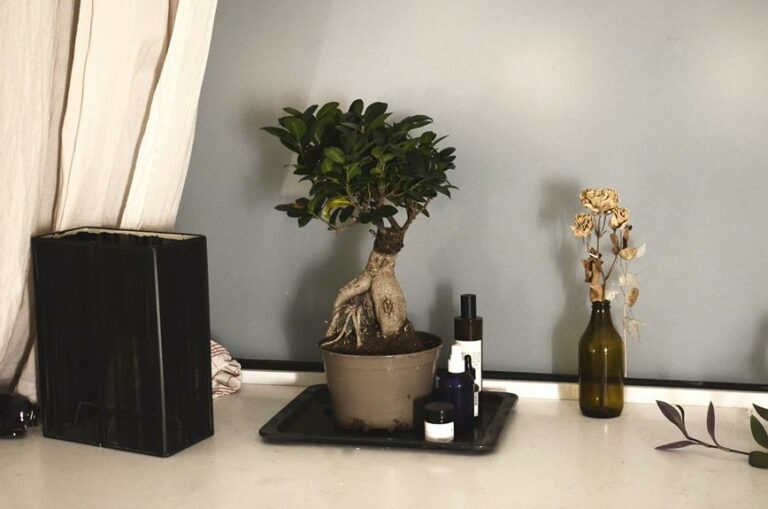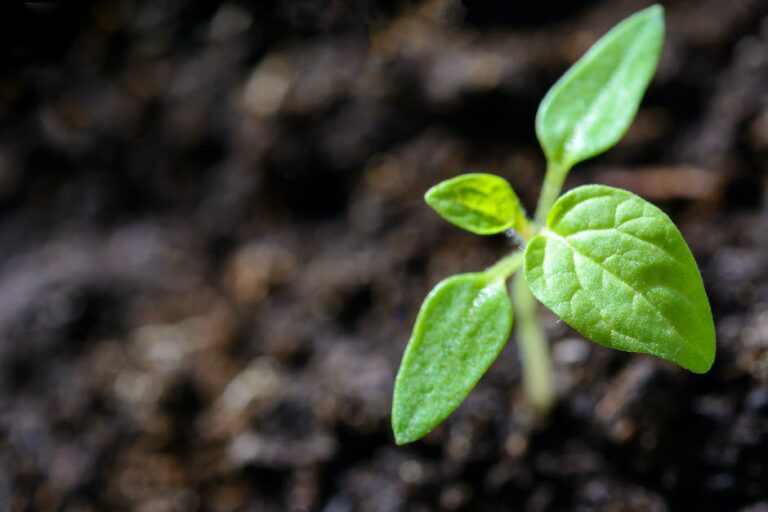Troubleshooting Japanese Maple Bonsai Issues
Are your Japanese maple bonsai trees struggling and not thriving like they should? You’re not alone – growing healthy bonsai can be challenging and Japanese maples are particularly prone to certain issues that can stunt their growth and damage their leaves. In this comprehensive guide, we’ll cover the 10 most common probems afflicting Japanese maple bonsai and provide tips and solutions for troubleshooting each one.
As a popular bonsai species admired for its delicate foliage and intricate branching patterns, Japanese maples require special care and attention. However, their shallow root systems also make them vulnerable if their needs aren’t properly met. Whether it’s underwatering, overwatering, pests, or diseases, these delicate trees can quickly decline if problems aren’t addressed promptly.
Key Takeaways
- Nutrient deficiencies can cause leaf discoloration in Japanese maple bonsai.
- Regularly monitoring leaf color and health helps identify nutrient deficiencies early on.
- Beneficial insects and organic pest control methods can help prevent pest infestation.
- Proper watering techniques and root health are crucial for the health of Japanese maple bonsai.
Leaf Discoloration
You may notice that the leaves on your Japanese maple bonsai have started to show discoloration. Leaf discoloration is a common issue that can be prevented with proper care.
One of the main causes of leaf discoloration in Japanese maple bonsai is nutrient deficiencies. Identifying these deficiencies is crucial in addressing the problem. Nitrogen deficiency, for example, can cause pale and yellowish leaves. Iron deficiency, on the other hand, leads to yellowing between leaf veins.
To prevent leaf discoloration, it’s important to provide your bonsai with a balanced fertilizer that contains essential nutrients. Regularly monitoring the color and health of your bonsai’s leaves will help you identify any nutrient deficiencies early on.
Pest Infestation
Pest infestation can be a real nuisance when it comes to maintaining the health and beauty of your bonsai. But don’t worry, because with the right knowledge and techniques, you can prevent and treat common bonsai pests.
Preventing Common Bonsai Pests
To prevent common pests from infesting your Japanese maple bonsai, regularly inspect the leaves and branches for any signs of damage or insects. By doing so, you can catch any infestations early on and take the necessary steps to control and eliminate them.
One effective method of natural pest control is to encourage the presence of beneficial insects in your bonsai garden. These insects, such as ladybugs, lacewings, and predatory mites, feed on common pests like aphids, scales, and spider mites. To attract beneficial insects, you can plant flowers and herbs that they’re attracted to, such as marigolds, daisies, and cilantro.
Additionally, you can use organic insecticides sparingly, as they can harm both pests and beneficial insects.
Treating Pest-Infested Bonsai
If your bonsai is infested with pests, it’s important to act quickly to prevent further damage. Treating fungal infections and implementing organic pest control methods are effective ways to restore the health of your bonsai.
To treat fungal infections, carefully remove the affected leaves or branches and dispose of them properly to prevent the spread of spores. Applying a fungicide specifically designed for bonsai can also help eliminate the fungus.
Organic pest control methods, such as using neem oil or insecticidal soap, can be effective in combating common pests like aphids, mites, and scale insects. Regularly inspect your bonsai and if you notice any signs of pest infestation, promptly apply the organic pest control treatment to minimize damage to your bonsai and ensure its continued growth and beauty.
Improper Watering
You need to ensure that the Japanese maple bonsai is being watered properly to prevent any issues. Improper watering can lead to wilting of the leaves and even root rot, which can be detrimental to the health of your bonsai.
To prevent these problems, here are some important tips to follow:
- Water the bonsai thoroughly, allowing the water to soak the entire root system.
- Make sure the soil is well-draining to avoid waterlogging.
- Check the moisture level of the soil regularly by inserting your finger about an inch deep into the soil.
- Water the bonsai only when the top inch of soil feels slightly dry.
- Avoid overwatering, as it can lead to root rot and other fungal diseases.
Pruning Mistakes
When it comes to pruning your bonsai tree, it’s important to be mindful of the mistakes that can hinder its growth and health.
Over-pruning can weaken the tree, so it’s crucial to prune in the dormant season when the tree is less vulnerable.
Additionally, avoiding heavy branch removal is essential to maintain the tree’s structural integrity and overall balance.
Over-Pruning Weakens Tree
Your tree will weaken if you prune it too much. Pruning is an essential part of bonsai care, but it should be done with caution to prevent over-pruning and promote tree strength. Here are some tips to help you prevent over-pruning and ensure the health and vitality of your tree:
- Understand the species: Different trees have different pruning requirements, so it’s crucial to research and understand the specific needs of your Japanese maple bonsai.
- Follow the 1/3 rule: Avoid removing more than one-third of the tree’s foliage in a single pruning session to prevent excessive stress on the tree.
- Choose the right time: Prune your tree during the appropriate season, typically in early spring or late winter, when the tree is dormant.
- Prune for structure: Focus on removing dead, damaged, or crossing branches to improve the tree’s overall structure and airflow.
- Monitor growth: Regularly observe your tree’s growth to identify areas that may need light pruning to maintain a balanced shape.
Prune in Dormant Season
Pruning during the dormant season allows for optimal tree health and growth. It is an essential technique in maintaining the shape and structure of your trees, especially for Japanese maple bonsai. By removing unwanted branches and promoting new growth, you can enhance the overall aesthetic appeal of your bonsai.
During the dormant season, which typically occurs in late winter or early spring, the tree is in a resting phase. This makes it an ideal time to prune as the tree is less susceptible to stress and diseases. Pruning during this time also allows for better visibility of the tree’s structure, making it easier to identify and remove any damaged or crossing branches.
To help you understand the benefits of pruning during the dormant season, here is a table showcasing some key pruning techniques and their effects on tree care:
| Pruning Technique | Effects on Tree Care |
|---|---|
| Thinning | Improves air circulation and light penetration, reducing the risk of diseases. |
| Heading Back | Stimulates new growth and promotes a fuller canopy. |
| Crown Reduction | Controls the size of the tree and encourages a more balanced structure. |
Avoid Heavy Branch Removal
Removing heavy branches during the dormant season can cause stress and potential damage to your tree. To ensure the health and vitality of your Japanese maple bonsai, it’s crucial to avoid pruning mistakes and use proper branch pruning techniques.
Here are some important tips to keep in mind:
- Always start by evaluating the overall structure and health of your tree.
- Identify any dead, diseased, or damaged branches that need to be removed.
- Use clean and sharp pruning tools to make clean cuts and minimize damage.
- Make sure to cut just outside the branch collar, avoiding leaving stubs or cutting too close.
- Limit the amount of heavy branch removal during the dormant season to prevent stress and allow the tree to recover properly.
Sunlight and Shade Issues
To ensure your Japanese maple bonsai thrives, it’s important to find the right balance between sunlight and shade. Sunlight exposure is crucial for the bonsai’s growth and overall health, but too much direct sunlight can harm the delicate leaves and cause leaf scorching. On the other hand, insufficient sunlight can lead to weak growth and sparse foliage. It’s essential to understand the specific sunlight needs of your Japanese maple bonsai and provide the appropriate amount of shade when necessary. Shading techniques such as using shade cloth, placing the bonsai under a tree, or using a small umbrella can help protect the bonsai from excessive sunlight. Here’s a table summarizing the sunlight requirements and shading techniques for Japanese maple bonsai:
| Sunlight Exposure | Shading Techniques |
|---|---|
| Full Sun | None |
| Partial Sun | Shade cloth |
| Dappled Shade | Under a tree |
Soil Quality and Ph Imbalance
When it comes to the health and wellbeing of your Japanese maple bonsai, one crucial factor to consider is the quality of the soil and the pH levels. The soil composition and acidity levels play a significant role in the overall growth and vitality of your bonsai.
Here are a few key points to keep in mind:
- Soil Composition: Ensure that your bonsai is planted in well-draining soil that provides adequate aeration for the roots. A mixture of organic matter, such as peat moss or compost, and inorganic materials like perlite or gravel, can create an ideal soil composition for your bonsai.
- Acidity Levels: Japanese maple bonsai prefer slightly acidic soil, with a pH range of 5.5 to 6.5. To maintain the appropriate acidity levels, you can use acidic fertilizers or incorporate organic materials like pine needles or oak leaves into the soil.
- Monitoring pH: Regularly test the pH levels of your bonsai’s soil using a pH testing kit. This will help you identify any imbalances and make necessary adjustments to ensure optimal soil conditions for your Japanese maple bonsai.
- Correcting Imbalances: If the soil pH is too high (alkaline), you can lower it by adding organic matter rich in acidity, such as sphagnum peat moss. Conversely, if the pH is too low (acidic), you can use agricultural lime or dolomite lime to raise it.
- Seeking Expert Advice: If you’re unsure about soil composition or pH levels, consult with experienced bonsai enthusiasts or horticulturists who can provide guidance on maintaining the ideal soil conditions for your Japanese maple bonsai.
Root Rot and Overwatering
If you overwater your bonsai and neglect proper drainage, root rot can become a major problem. Preventing root rot is crucial for the health and longevity of your Japanese maple bonsai.
One of the most important steps in preventing root rot is to ensure proper drainage. Make sure your bonsai pot has sufficient drainage holes and use a well-draining soil mix.
Additionally, pay attention to the signs of overwatering. If you notice wilting leaves, yellowing or browning of foliage, or a foul smell coming from the soil, these may be indications that you’re overwatering your bonsai. Adjust your watering schedule accordingly and allow the soil to dry out slightly between waterings.
Nutrient Deficiencies
If you notice yellowing leaves, stunted growth, or leaf discoloration in your japanese maple bonsai, it could be a sign of nutrient deficiencies.
Nutrient deficiencies occur when the plant doesn’t receive enough essential nutrients like iron, nitrogen, and potassium.
These deficiencies can impact the overall health and vitality of your bonsai, so it’s important to address them promptly.
Yellowing Leaves, Iron Deficiency
You might notice yellowing leaves on your Japanese maple bonsai, which could indicate an iron deficiency. To prevent yellowing leaves and treat an iron deficiency in your bonsai, consider the following:
- **Check the pH level** of the soil using a pH testing kit. Iron is less available to plants in alkaline soil, so maintaining a slightly acidic pH of around 6.5 can help prevent deficiencies.
- **Apply iron chelate** to the soil or foliar spray. Iron chelate is a form of iron that’s easily absorbed by plants and can quickly correct deficiencies.
- **Avoid overwatering** your bonsai. Excess water can lead to poor oxygenation of the roots, which can inhibit iron uptake.
- **Ensure proper drainage** in your bonsai’s pot. Good drainage helps prevent waterlogging and allows the roots to access iron more effectively.
- **Consider using iron-rich fertilizers** to provide a consistent supply of iron to your bonsai.
Stunted Growth, Nitrogen Deficiency
To promote healthy growth in your bonsai, it’s important to address any nitrogen deficiencies that may be causing stunted growth. Nitrogen is an essential nutrient for plant growth, as it plays a crucial role in the production of proteins, enzymes, and chlorophyll. Without adequate nitrogen, your bonsai may experience slow or stunted growth, pale leaves, and overall weakness. To diagnose a nitrogen deficiency, look for yellowing or pale leaves, especially in older growth. You can also perform a soil test to measure the nitrogen levels. To prevent stunted growth due to nitrogen deficiency, consider using a balanced fertilizer with a higher nitrogen content. Remember to follow the recommended dosage and frequency on the fertilizer packaging. Providing your bonsai with sufficient nitrogen will help ensure vigorous growth and vibrant foliage.
| Symptoms | Diagnosis | Prevention |
|---|---|---|
| Yellowing or pale leaves | Perform a soil test or observe for visual cues | Use a balanced fertilizer with higher nitrogen content |
| Slow or stunted growth | Monitor growth rate and compare to expected growth | Follow recommended dosage and frequency on fertilizer packaging |
| Weak overall appearance | Assess overall health and observe for other symptoms | Ensure proper watering and light conditions, and use a nitrogen-rich fertilizer |
Leaf Discoloration, Potassium Deficiency
When the leaves of your bonsai start to turn yellow or exhibit other forms of discoloration, it could indicate a potassium deficiency. Potassium is essential for the overall health and vitality of your bonsai, and a deficiency can lead to various leaf issues.
To prevent leaf curling and other problems, here are some tips to consider:
- Ensure proper watering: Overwatering or underwatering can both contribute to leaf discoloration. Maintain a consistent watering schedule and monitor the soil moisture levels regularly.
- Use a balanced fertilizer: Choose a fertilizer specifically formulated for bonsai trees that contains a balanced amount of potassium along with other essential nutrients.
- Adjust pH levels: Test the pH of the soil and make adjustments if necessary. Potassium uptake can be affected by the soil’s acidity or alkalinity.
- Provide adequate sunlight: Make sure your bonsai receives enough sunlight, as it helps with nutrient absorption and overall plant health.
- Inspect for fungal infections: Leaf discoloration can also be a sign of fungal infections. Examine the leaves and branches regularly for any signs of fungal growth or damage.
Overcrowding and Root Bound
If your Japanese maple bonsai is overcrowded and root bound, it may be time to repot it. Overcrowding can lead to stunted growth and a decline in overall health. To prevent overcrowding, it’s important to choose the right size of pot for your bonsai. A pot that’s too small will restrict root growth and lead to overcrowding.
Additionally, regular root pruning techniques can help maintain a healthy root system and prevent overcrowding. When repotting your bonsai, carefully remove the tree from its current pot and gently untangle the roots. Trim back any excessively long or tangled roots using sharp bonsai shears.
Winter Protection and Frost Damage
Protect your bonsai from frost damage by providing adequate winter protection such as wrapping the pot in insulating material or moving it to a sheltered location. Winter can be harsh for bonsai trees, and without proper protection, the cold temperatures can cause irreversible damage.
Here are some measures you can take to prevent frost damage:
- Mulching: Apply a layer of mulch around the base of the bonsai to insulate the roots and help retain moisture.
- Windbreak: Use a windbreak, such as a screen or fence, to shield your bonsai from cold winds.
- Cold frame: Consider using a cold frame or greenhouse to provide additional protection from freezing temperatures.
- Watering: Keep a close eye on watering during winter, as the bonsai may require less frequent watering but still needs adequate moisture.
- Placement: Choose a location for your bonsai that offers protection from extreme cold, such as a covered patio or garage.
Repotting Challenges
Repotting can be challenging, but by following proper techniques and using the right tools, you can successfully transplant your bonsai without causing harm to its delicate roots.
When it comes to repotting techniques, timing is key. The best time to repot your bonsai is during the early spring before new growth begins. This allows the tree to recover quickly and establish itself in its new pot.
When choosing the right pot, consider the size and style of your bonsai. The pot should be slightly larger than the previous one, providing enough space for the roots to grow and develop. Additionally, make sure the pot has proper drainage holes to prevent waterlogging.
With patience and care, you can master the art of repotting and ensure the health and longevity of your bonsai.
My Personal Troubleshooting Experience
When I first started growing Japanese maple bonsai trees, I faced several challenges that caused unhealthy trees. As a new bonsai grower, it was difficult for me to identify the root causes of the issues I was seeing. Over time, through trial and error, I learned how to troubleshoot common problems with my Japanese maple bonsai.
One of the first issues I encountered was leaves turning yellow or brown. I initially thought this might be a watering problem, so I tried watering more frequently. However, the leaf discoloration continued to get worse. After doing some research, I realized inadequate drainage in the bonsai soil was likely the real culprit (source: AZ Animals). Switching to a well-draining bonsai soil solved the moisture issues and my trees started to look much healthier.
Another troubling symptom was sections of branches or the entire tree suddenly dying. At first, I thought I may have overwatered and caused root rot. However, after inspecting the roots, they seemed fine. Then I noticed one side of a tree was completely dead (source: Mike’s Backyard Nursery). This clued me in that the problem was likely a disease or pest infestation targeting certain areas. Now I monitor my trees closely for signs of disease and address issues promptly.
Through learning from mistakes and researching solutions, I have gotten much better at identifying the root causes of problems in my Japanese maple bonsai. I hope sharing my personal troubleshooting experiences provides some useful insights for other bonsai growers facing similar issues. Proper diagnosis is key to providing trees with targeted care.
Conclusion
One of the most common problems is leaf scorch or discoloration, which can be caused by overwatering, underwatering, or improper winter storage conditions as discussed in this guide. It is important to monitor soil moisture levels and the amount of sunlight or shade the tree receives to avoid stressing the leaves.
Other potential issues include stunted growth, which may result from incorrect pruning techniques as explained on this site. Proper pruning is necessary for the tree to develop a balanced structure. Root rot can also plague Japanese maple bonsai if the soil stays too wet for prolonged periods as shown in this forum post. Ensuring good drainage and air circulation around the roots will help prevent rot. With careful monitoring and addressing any problems promptly, Japanese maple bonsai can thrive for many years.precision, and experience.
By addressing leaf discoloration, pest infestation, improper watering, pruning mistakes, sunlight and shade issues, nutrient deficiencies, overcrowding and root bound conditions, winter protection and frost damage, and repotting challenges, bonsai enthusiasts can ensure the health and vitality of their miniature trees.
With careful observation and prompt action, these common problems can be resolved, allowing the beauty and grace of the Japanese maple bonsai to flourish.

